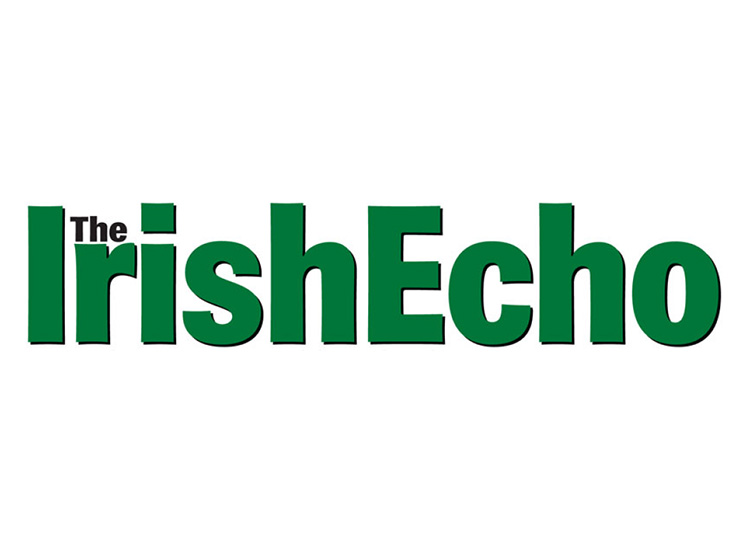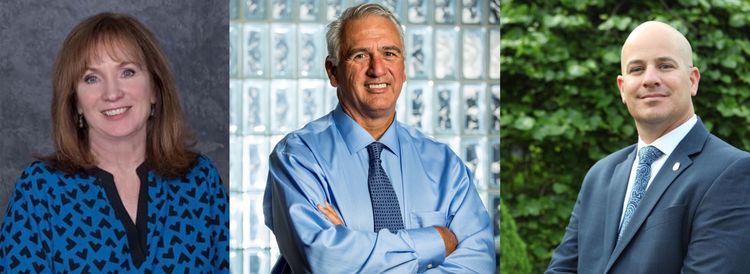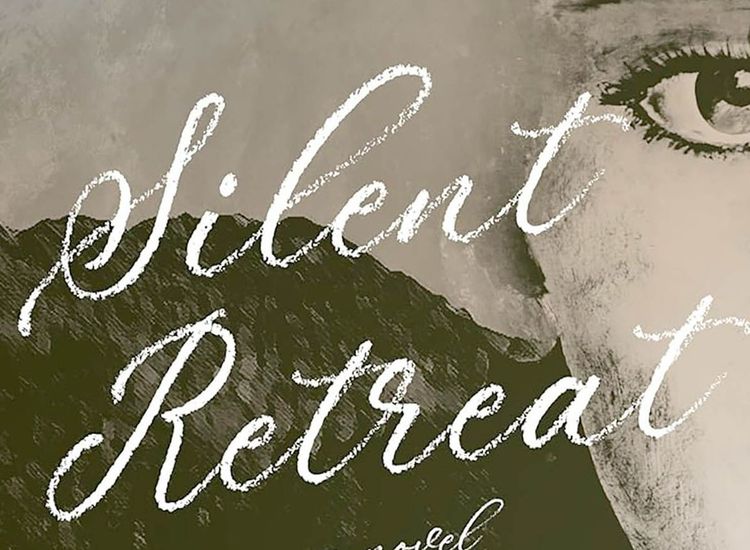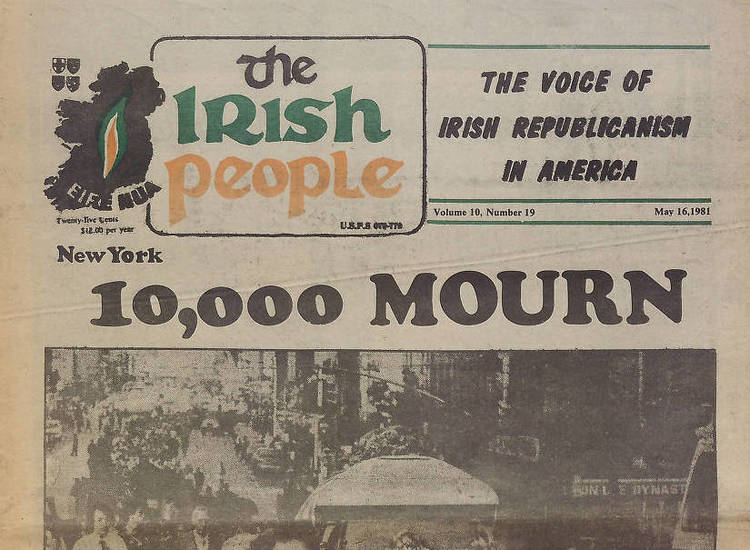Caoimhín De Barra, author of “The Coming of the Celts, AD 1860.”
Page Turner / Edited by Peter McDermott
A replica of the sculpture “The Dying Galatian” — also known as the “The Dying Gaul” and in previous times “The Dying Gladiator” — is prominently displayed in Leinster House where the Dáil sits in central Dublin. In “The Coming of the Celts, AD 1860,” Caoimhín De Barra writes that the “government is celebrating the link between the Irish of today and the Celts who lived on the Continent over two millennia ago.”
Such ideas are “actively taught,” he writes. He recalls his own days as an undergraduate at University College Cork in 2002 taking courses in Celtic civilization: “Lectures about the archeological findings at the Celtic sites at Halstatt (in modern Austria) and La Tène (Switzerland) were given alongside discussions of the early medieval literature of Ireland and Wales.”
Little wonder, then, that some people in academia were shocked when an article entitled “The Fine-Scale Genetic Structure of the British Population,” published in Nature in March 2015, reported that quite a bit of genetic difference had been found between regions, but also revealed no common genetic link between, in De Barra’s words, the “supposedly Celtic peoples of Britain and Ireland.”
Others weren’t so surprised, he says, as the “belief that the ancient people who inhabited Ireland and Britain were Celts has come under increasing attack.”
How, then, did Ireland together with parts of Britain and France come to self-identify or be identified by others as Celtic?
The story, says De Barra, an assistant professor of history at Gonzaga University in Spokane, Wash., begins with George Buchanan’s “The History of Scotland,” published in 1582, and continues with a 1703 work by Paul-Yves Pezron, an abbot from Brittany, “Antiquite de la nations, et de langue des Celtes, autrement appelez Gaulois.” The latter’s ideas were in turn expanded by a contemporary, Edward Lhuyd, who was an English-born linguist of Welsh parentage.
But in the 18th century, the word “Celtic,” insofar as it was used at all, referenced the ancient Irish and British past and modern languages like Irish and Welsh, which were clearly related, even if mutually unintelligible. Its usage when talking about modern peoples only came about with the rise of nationalism from the mid-19th century onwards.
Using a search engine, De Barra has tracked a dramatic increase of the occurrence of the word “Celtic” in Irish newspapers — from very infrequent at the turn of the century and the early decades to a peak of 5,342 mentions in 21 newspapers in the 1880s, or an average of 254 times per paper in that decade.
“Broadly speaking,” he told the Echo, “the book is about the relationship between nationalists in Wales and Ireland in the late 19th and early 20th centuries. After exploring why people in these two countries came to identify as ethnically ‘Celtic,’ I explain how Irish and Welsh nationalists looked across the Irish Sea to their Celtic cousins to provide inspiration for their campaigns to develop the ‘perfect’ nation at home.”
De Barra, a long-time rugby player who coaches Gonzaga’s hurling team, added: “The book concludes with an examination of the Irish Revolution through a ‘Celtic’ lens, especially the fact that Irish rebels who wanted to create an independent, Irish-speaking republic were opposed by a British prime minister who spoke Welsh as his first language.”
It has been praised by fellow scholars and book reviewers.
"At the core of this deeply researched book is an original study of how Wales became part of the Irish nationalist imagination―both as inspiration and reproach,” commented Paul O’Leary of Aberystwyth University in Wales.
“It sheds valuable new light on the transnational influences on Irish nationalism by exploring the interactions between nationalists in Ireland and Wales,” O’Leary continued, “and it uses these two historical case studies skillfully to illuminate wider debates about the role of language in modern nationalism.”
John S. Ellis, of the University of Michigan-Flint, said, "Engagingly written, well researched and grounded in both Irish and Welsh language sources, this is an important and much needed study that usefully reframes the history of Irish and Welsh nationalism. Moving beyond the bilateral relationship with an English 'Other,' De Barra’s exploration of the ideological interconnections and limitations of Celtic identity in Ireland and Wales is compelling and insightful.”
Writing in the New York Review of Books, Fintan O’Toole said, “[I]n his finely researched and lucidly written study, De Barra details the rise, ebb, and flow of the idea of a common Celtic identity linking Ireland and Wales.” He added that the title is “provocatively witty but accurate.”
Caoimhín De Barra
Date of birth: Jan. 16, 1984
Place of birth: Cork
Spouse: Kathy
Children: Two daughters, ages 4 and 1
Residence: Spokane, Wash.
Published works: “The Coming of the Celts, A.D. 1860: Celtic Nationalism in Ireland and Wales,” University of Notre Dame Press, 2018: “Gaeilge: A Radical Revolution,” Currach Press, 2019.

What is your writing routine? Are there ideal conditions?
When you are working in academia, it is tough to have a set routine for writing because you have so many other demands on your time. The ideal conditions are having large blocks of time where you can focus almost exclusively on your writing, but those are hard to come by.
What advice do you have for aspiring writers?
Bernard Cornwell said that writers should write the book they want to read. I don’t think writers can get any better advice than that.
Name three books that are memorable in terms of your reading pleasure.
Well I am hesitant to say Joyce’s “Ulysses,” because that seems pretentious! But it is an extraordinary book and one that, once you get your head around how to read it, that you could probably read forever and find new angles to it each time.
“Beowulf,” especially the translation by Heaney, is a favorite read of mine as well.
This one will be from left field but I took great enjoyment from Seán Óg de Paor’s autobiography “Lá an Phaoraigh.” I love reading sports autobiographies and I love reading books in Irish, and this was a rare book that combined both.
What book are you currently reading?
“Utopia for Realists: How We Can Build the Ideal World,” by Rutger Bergman
Is there a book you wish you had written?
“An Béal Bocht" by Flann O’Brien. It is an exceptionally funny book.
Name a book that you were pleasantly surprised by.
“Wuthering Heights” by Emily Brontë. I had to read it in college and at the time I thought I would hate it because I thought it was a “girls book.” But I loved it.
If you could meet one author, living or dead, who would it be?
I’m going to cheat here on a technicality — as well as show my Cork bias — and say Roy Keane. He has written two autobiographies. I was very interested to read his own account of his career, so I think he would be a fascinating person to talk to.
What book changed your life?
“Banal Nationalism” by Michael Billig. I found it to be so incredibly insightful. I have always had a keen interest in nationalism and national identity, and Billig’s explanation for how nationalism works has deeply shaped my perspective on the world ever since.
What is your favorite spot in Ireland?
Garnish Harbour down the Beara Peninsula in West Cork.
You're Irish if...
You take pride in being Irish. That’s it.









